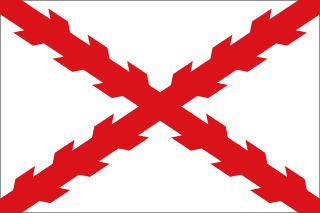
Flemish Brabant is a province of Flanders, one of the three regions of Belgium. It borders on the Belgian provinces of Antwerp, Limburg, Liège, Walloon Brabant, Hainaut and East Flanders. Flemish Brabant also surrounds the Brussels-Capital Region. Its capital is Leuven. It has an area of 2,106 km² which is divided into two administrative districts containing 65 municipalities.
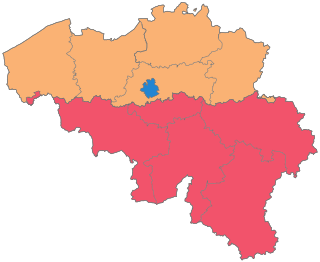
The country of Belgium is divided into three regions. Two of these regions, the Flemish Region or Flanders, and Walloon Region, or Wallonia, are each subdivided into five provinces. The third region, the Brussels-Capital Region, is not divided into provinces, as it was originally only a small part of a province itself.

The Royal Palace of Brussels is the official palace of the King and Queen of the Belgians in the centre of the nation's capital Brussels. However it is not used as a royal residence, as the king and his family live in the Royal Palace of Laeken on the outskirts of Brussels. The website of the Belgian Monarchy describes the function of the palace as follows:
"The Palace is where His Majesty the King exercises his prerogatives as Head of State, grants audiences and deals with affairs of state. Apart from the offices of the King and the Queen, the Royal Palace houses the services of the Grand Marshal of the Court, the King's Head of Cabinet, the Head of the King's Military Household and the Intendant of the King's Civil List. The Palace also includes the State Rooms where large receptions are held, as well as the apartments provided for foreign Heads of State during official visits."

Jean Druys, Latinized Drusius (1568-1634) was a Belgian Norbertine canon regular and 30th Abbot of Park Abbey.
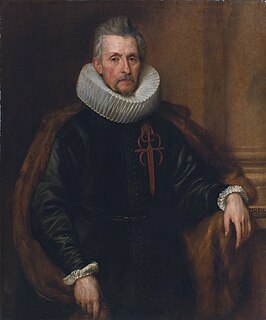
Ferdinand van Boisschot, Baron of Zaventem, was a Netherlandish jurist and diplomat who became chancellor of the Duchy of Brabant.
Pierre Roose, lord of Froidmont, Han and Jemeppe, was president of the Brussels Privy Council from 1632 to 1653, and a key actor in the government of the Habsburg Netherlands for over twenty years.

Charles de Hovyne (1596–1671), lord of Gouvernies, Granbray, Winckel, Steenkercke, etc., was president of the Brussels Privy Council from 1653 to 1671, and a key participant in and commentator upon the government of the Habsburg Netherlands.
Conrad Schetz de Grobbendonck, later Conrad d'Ursel (1553–1632) was a nobleman in the Habsburg Netherlands and in 1604–1609 the first ordinary ambassador to England for the Archdukes Albert and Isabella.
Willem Van der Tanerijen was a jurist in the Duchy of Brabant whose manuscript treatise on the procedures of the major courts of the duchy is an important source for the legal history of the fifteenth century. He was also a proponent of university training in law.
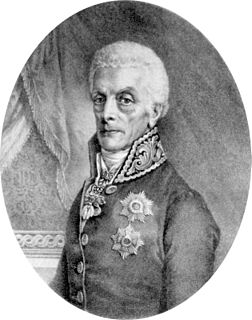
Ferdinand von Trauttmansdorff (1749–1827) was an Austrian diplomat and statesman. From 1787 to 1789 he was Minister plenipotentiary of the Austrian Netherlands, ruling on behalf of Emperor Joseph II.
Léon-Jean de Paepe (1610–1685), lord of Glabbeek, was an officeholder and statesman in the Spanish Netherlands. After serving on the Council of Brabant in Brussels and on the Supreme Council of Flanders in Madrid, De Paepe was appointed president of the Brussels Privy Council in 1674. He died on 8 August 1685.
Robert van Asseliers (1576-1661), was from 1651 head of the civilian government of the duchy of Brabant as chancellor of Brabant.

Joannes Baptista or Jean-Baptiste Christyn (1622–1690), 1st baron of Meerbeek, was a jurist and diplomat in the Spanish Netherlands, and Chancellor of Brabant from 1687 to 1690.
Jean-Baptiste Christyn (c.1635–1707), knight, was a lawyer and author in the Spanish Netherlands.

The Privy Council or Secret Council in Brussels was one of the three "collateral councils" that together formed the highest government institutions of the Habsburg Netherlands. It was particularly charged with legal and administrative questions.
Events in the year 1789 in the Austrian Netherlands and Prince-bishopric of Liège.
Philippe-Guillaume de Steenhuys (1593–1668), 1st baron of Poederlee and lord of Flers, Heerle, Gierle, Moerbeke, etc., was an office-holder in the Spanish Netherlands who served on the Great Council of Mechelen, the Council of Flanders, and the Brussels Privy Council.
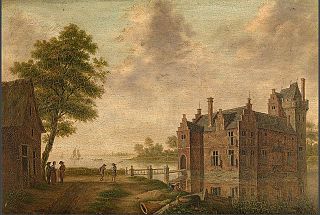
Jean Antoine Locquet, Lord of Impel, was a Brabantine lawyer who served as president of the Great Council of Mechelen and in 1681 became first viscount of Hombeke (Hombecque).
